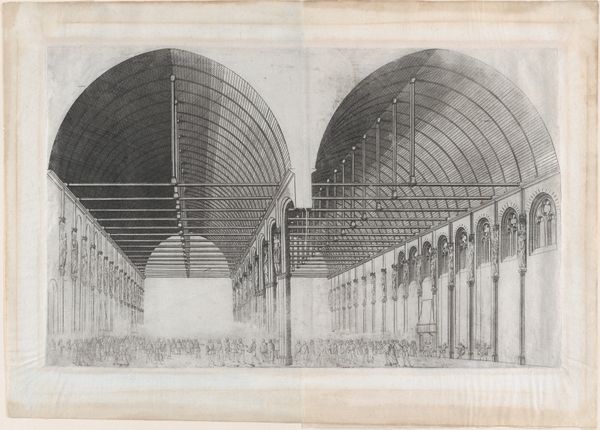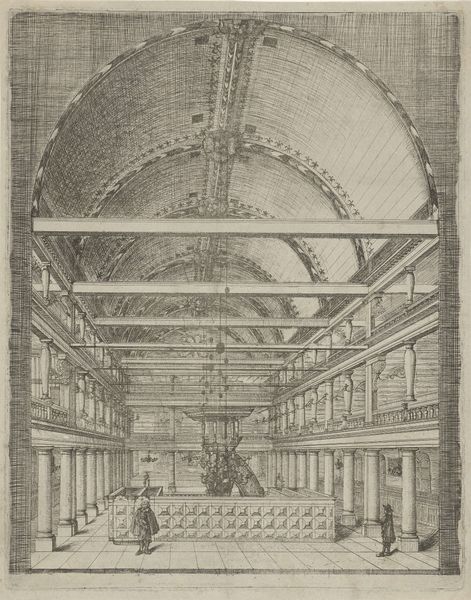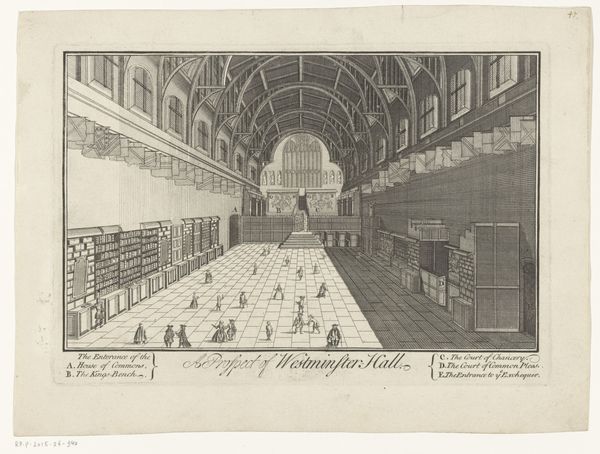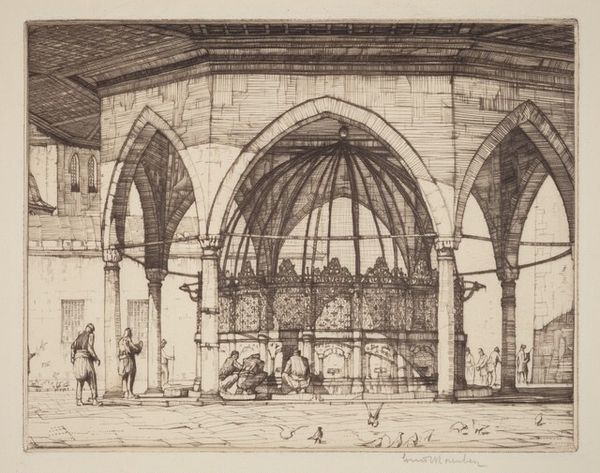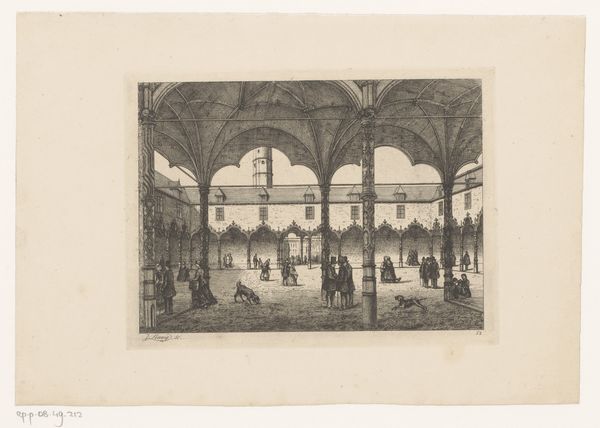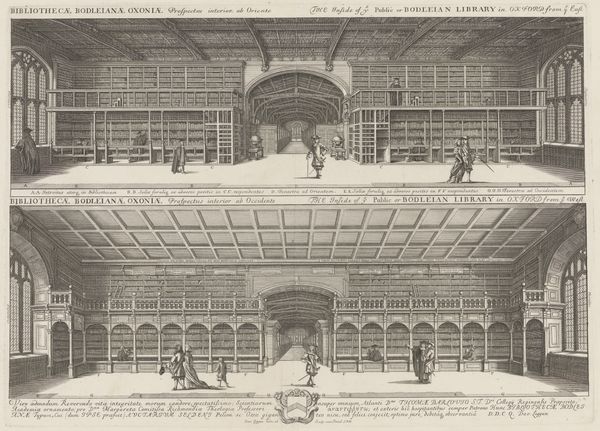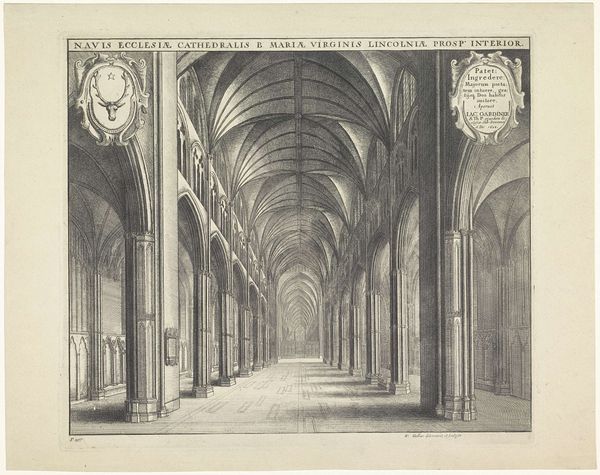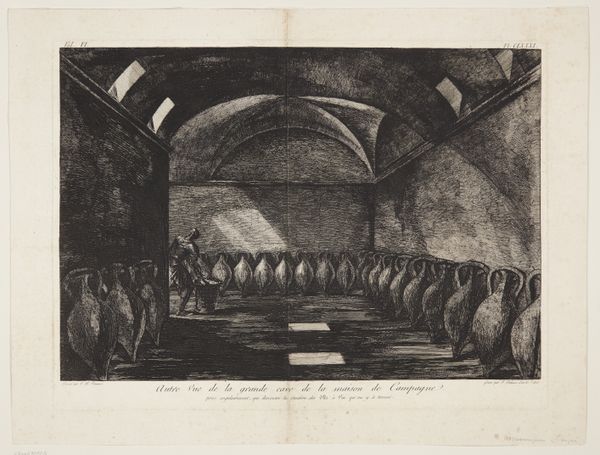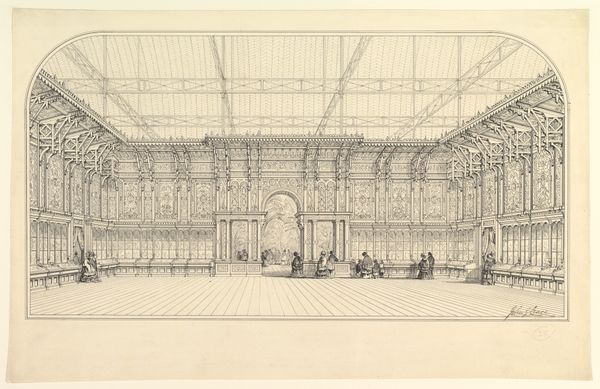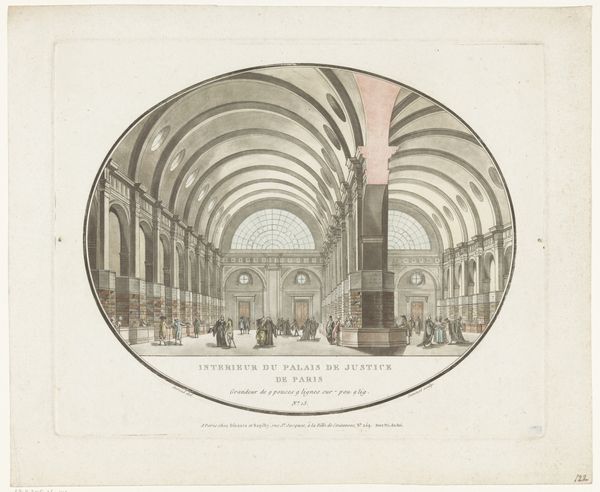
La salle des pas-perdus a l'ancien Palais de Justice (The antechamber of the Palais de Justice, Paris, Reproduction after the original by Jacques Anrouet Du Cerceau) 1855
0:00
0:00
Dimensions: plate: 12 x 17 1/8 in. (30.5 x 43.5 cm)
Copyright: Public Domain
Editor: This is Charles Meryon's etching from 1855, "La salle des pas-perdus a l'ancien Palais de Justice," depicting the antechamber of the Palais de Justice in Paris. The scale and precision of the linework are really striking. How do you approach interpreting such a technically complex piece? Curator: I'm particularly drawn to the interplay between the rigid architectural structure and the fluidity implied by the figures populating the space. Notice how Meryon utilizes line to define volume, yet the etching remains distinctly two-dimensional. This tension is critical. Editor: Yes, the detail in the vaulting and the geometric repetition create this almost overwhelming sense of space, contrasted against the relative freedom of the people. Do you think that contrast is intentional? Curator: Undoubtedly. The contrast generates a certain rhythm, guiding the viewer's eye. Consider the distribution of light and shadow. Where does your gaze linger, and why? The arches also act as dividers between two spaces within the same space, leading us through them. What are your observations? Editor: I find myself focusing on the vanishing point, of course, but I’m equally pulled towards the textural differences. The fine lines create a sense of almost oppressive grandeur in the architecture. What purpose would Meryon have for using his tools this way? Curator: Meryon masterfully manipulates the formal elements to evoke a specific feeling. His deliberate use of line, space, and contrast constructs the primary essence of the image. To study Meryon is to perceive the power of structure and composition as its own end. Editor: That makes me look at the geometry differently. It seems the medium is not the message here. The visual design, not the story, drives what the work really *is*. Curator: Precisely. An analysis of form over content enables an interesting insight into Meryon's intention behind such work.
Comments
No comments
Be the first to comment and join the conversation on the ultimate creative platform.
